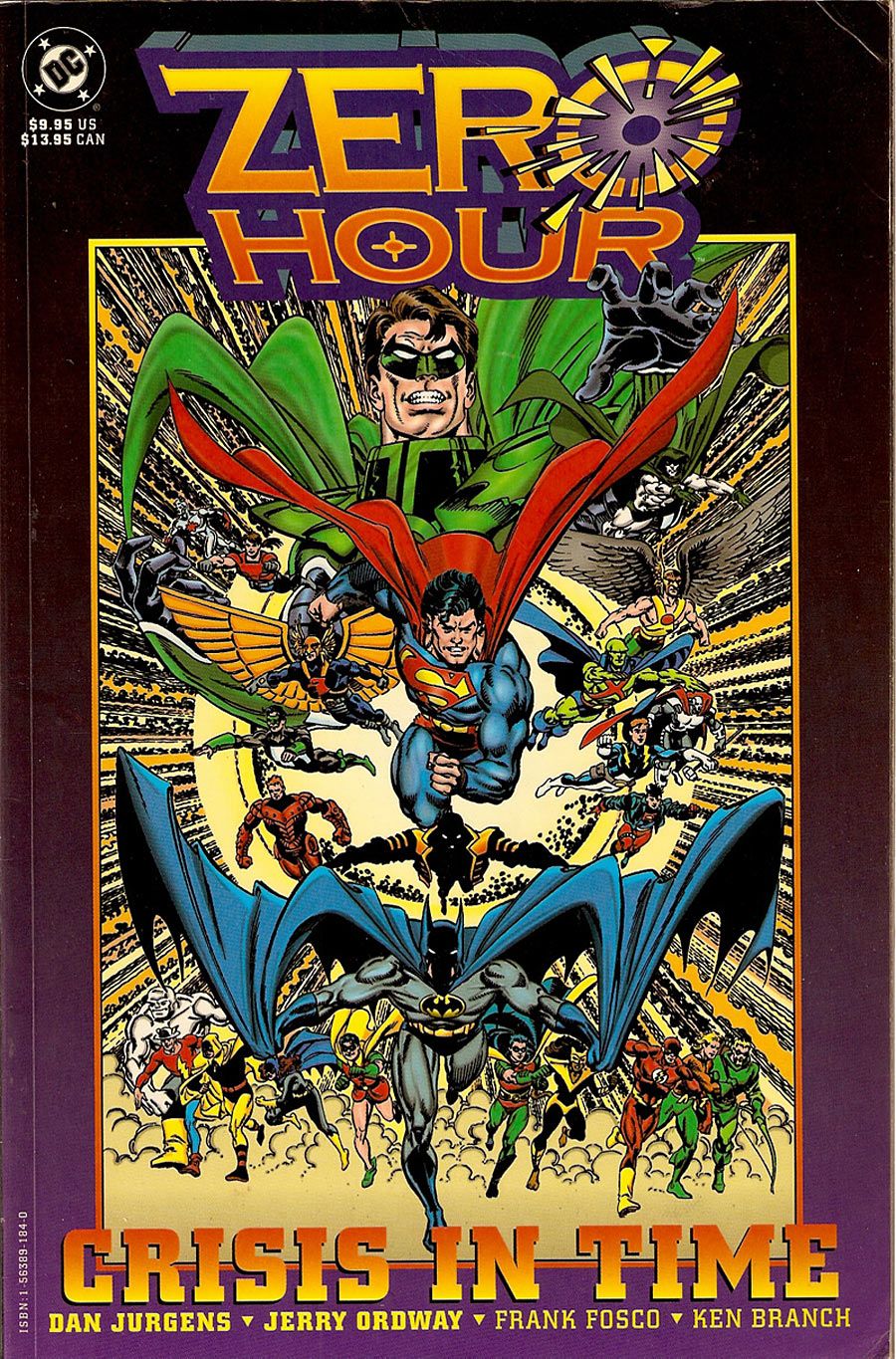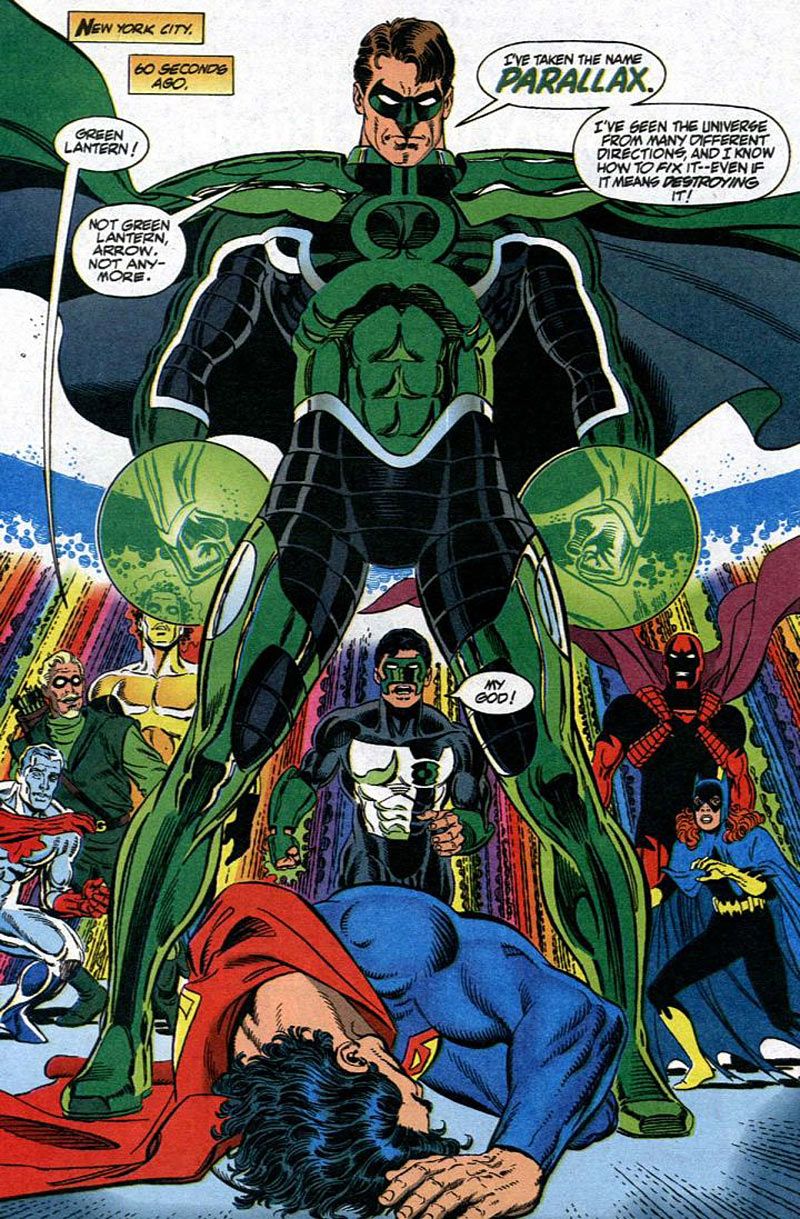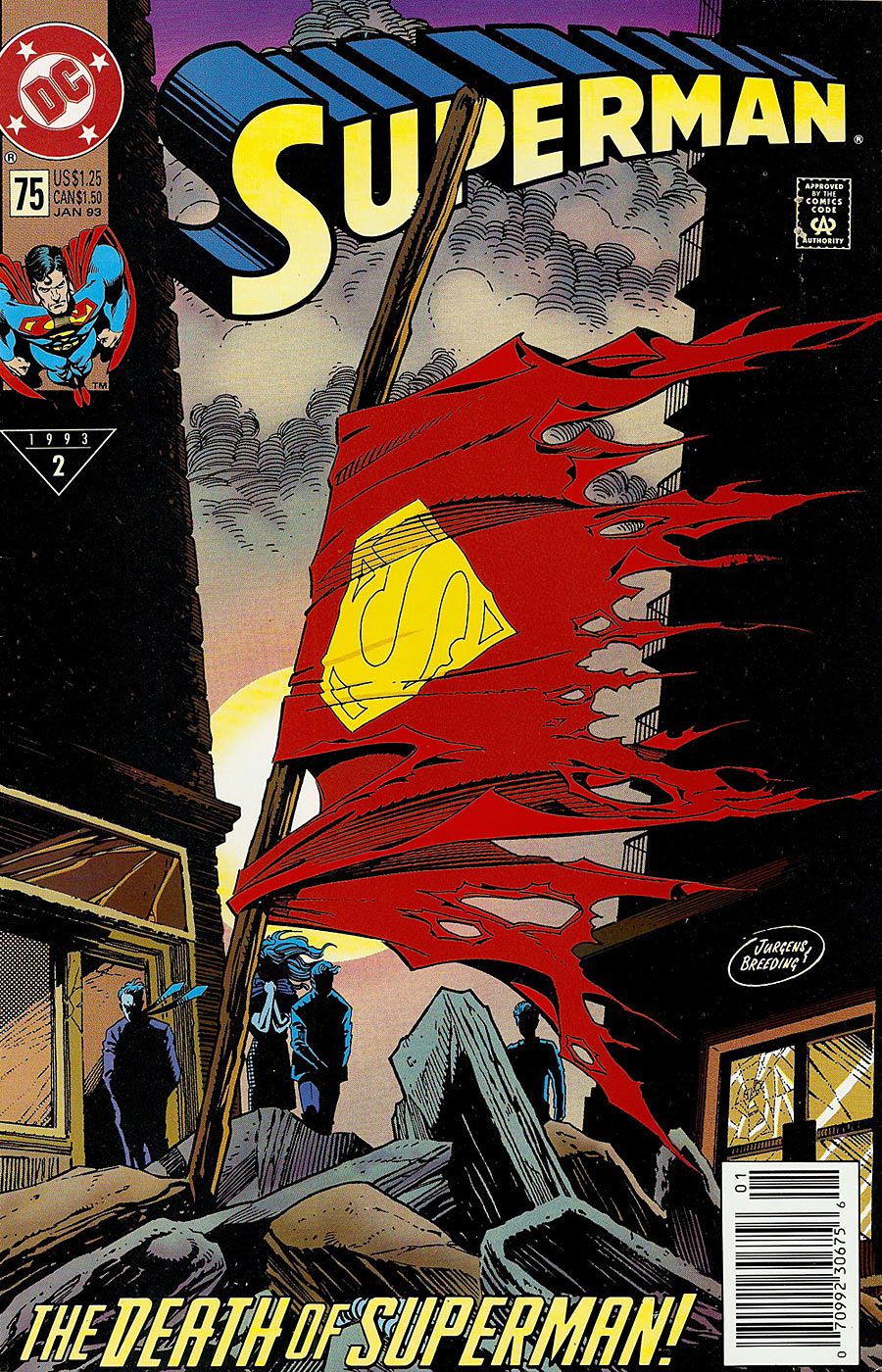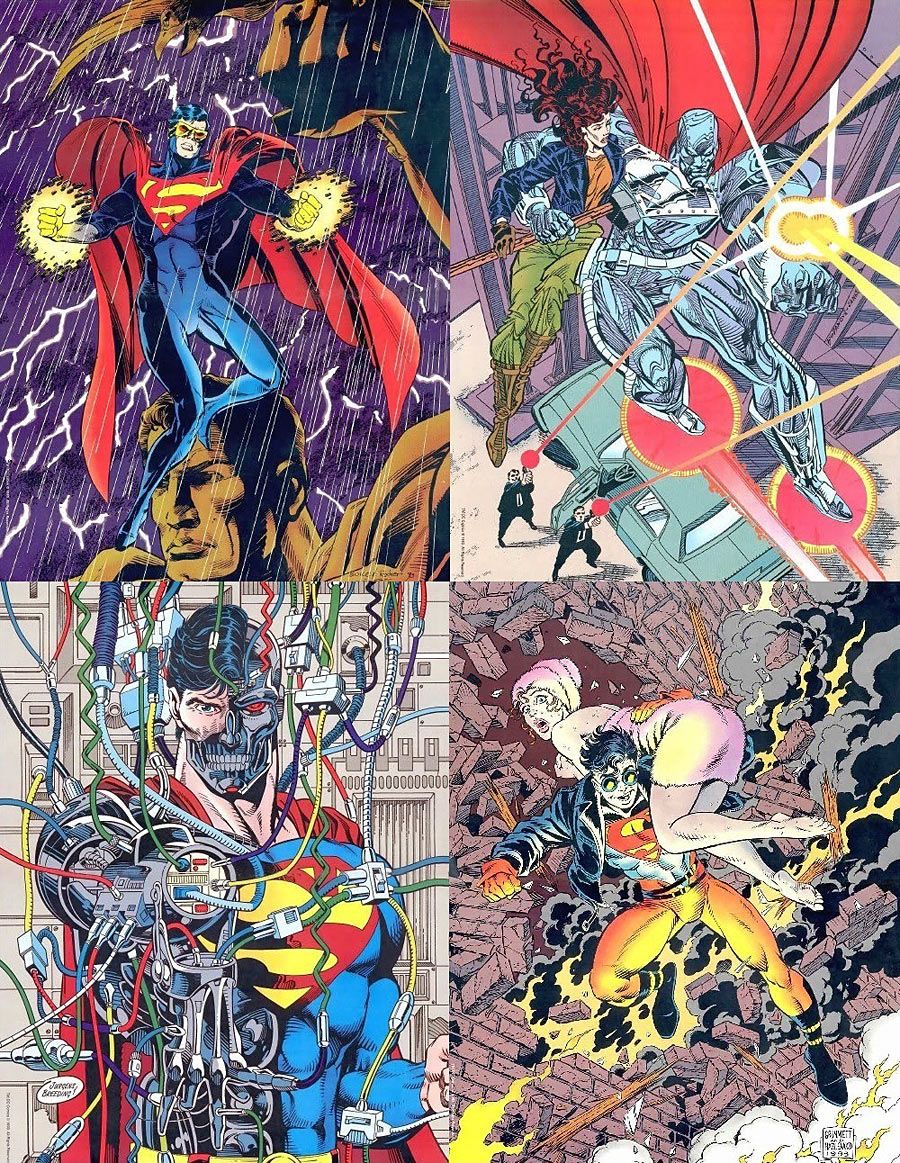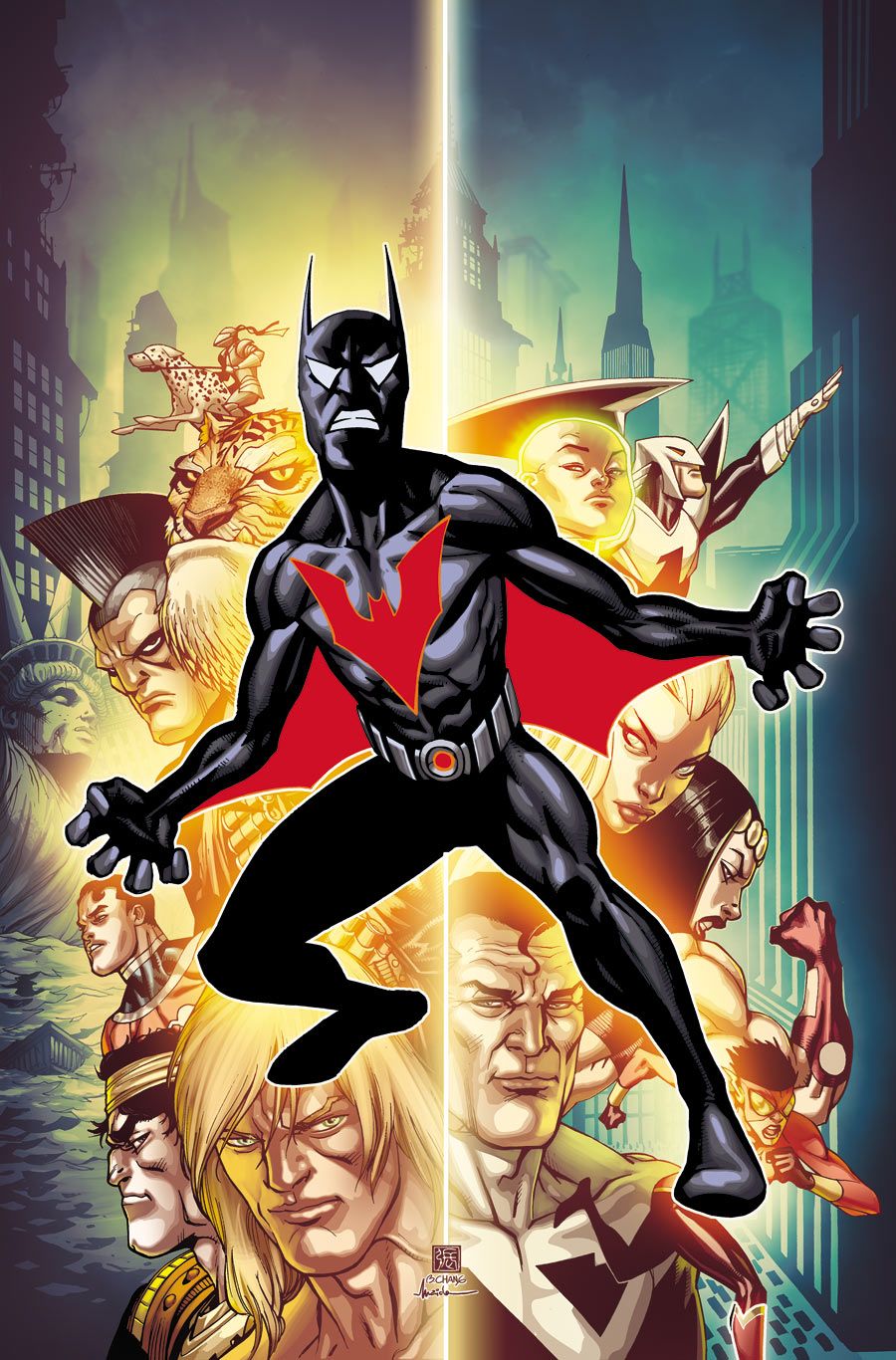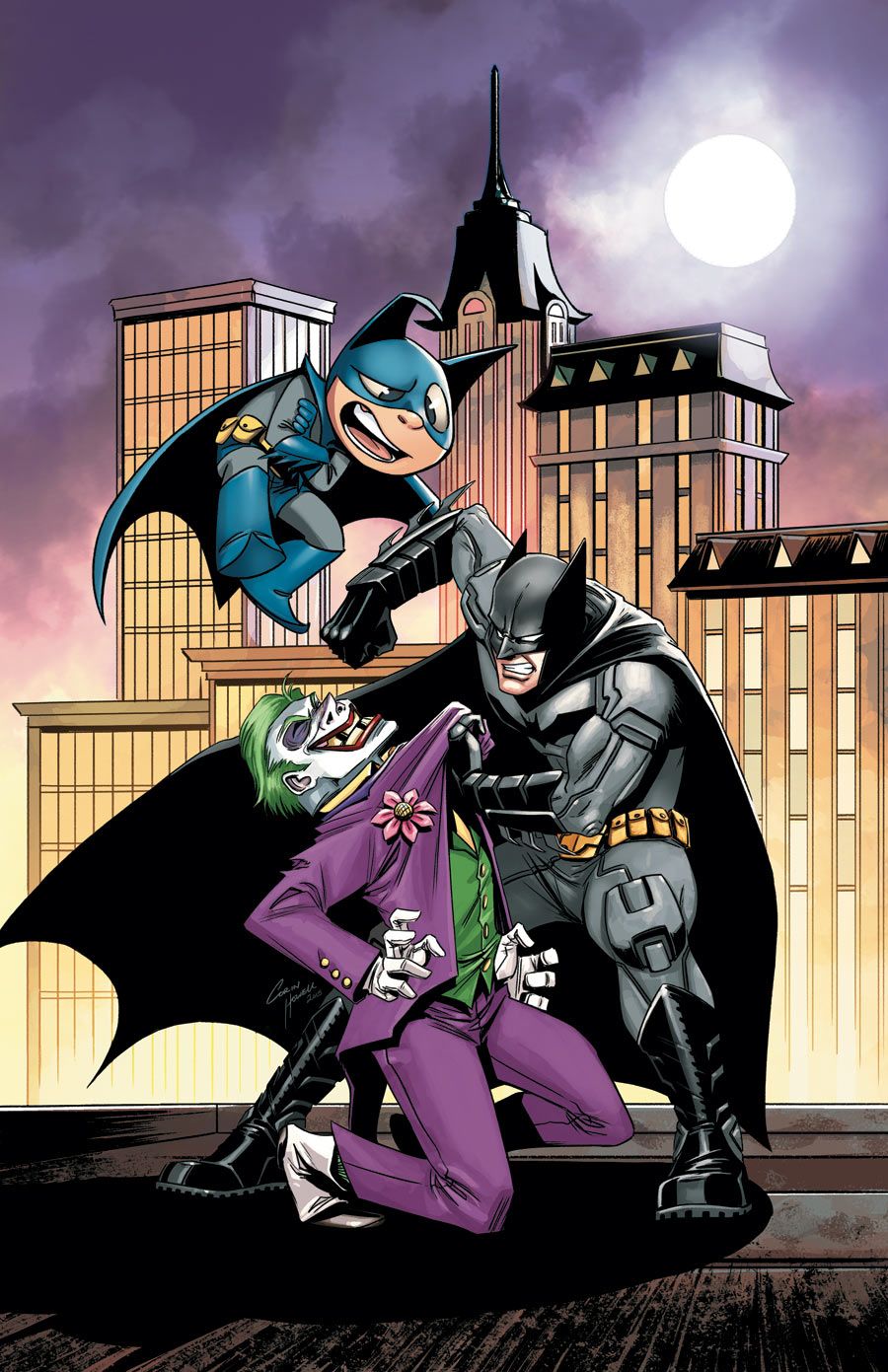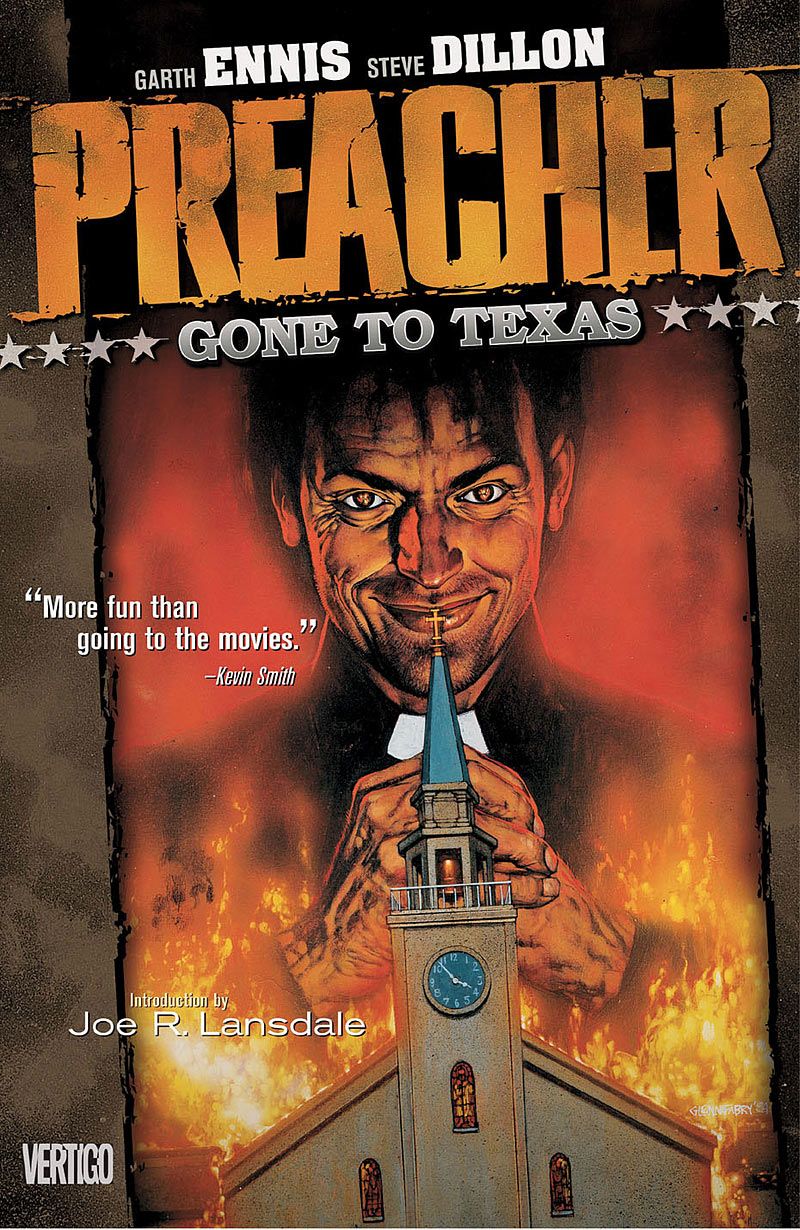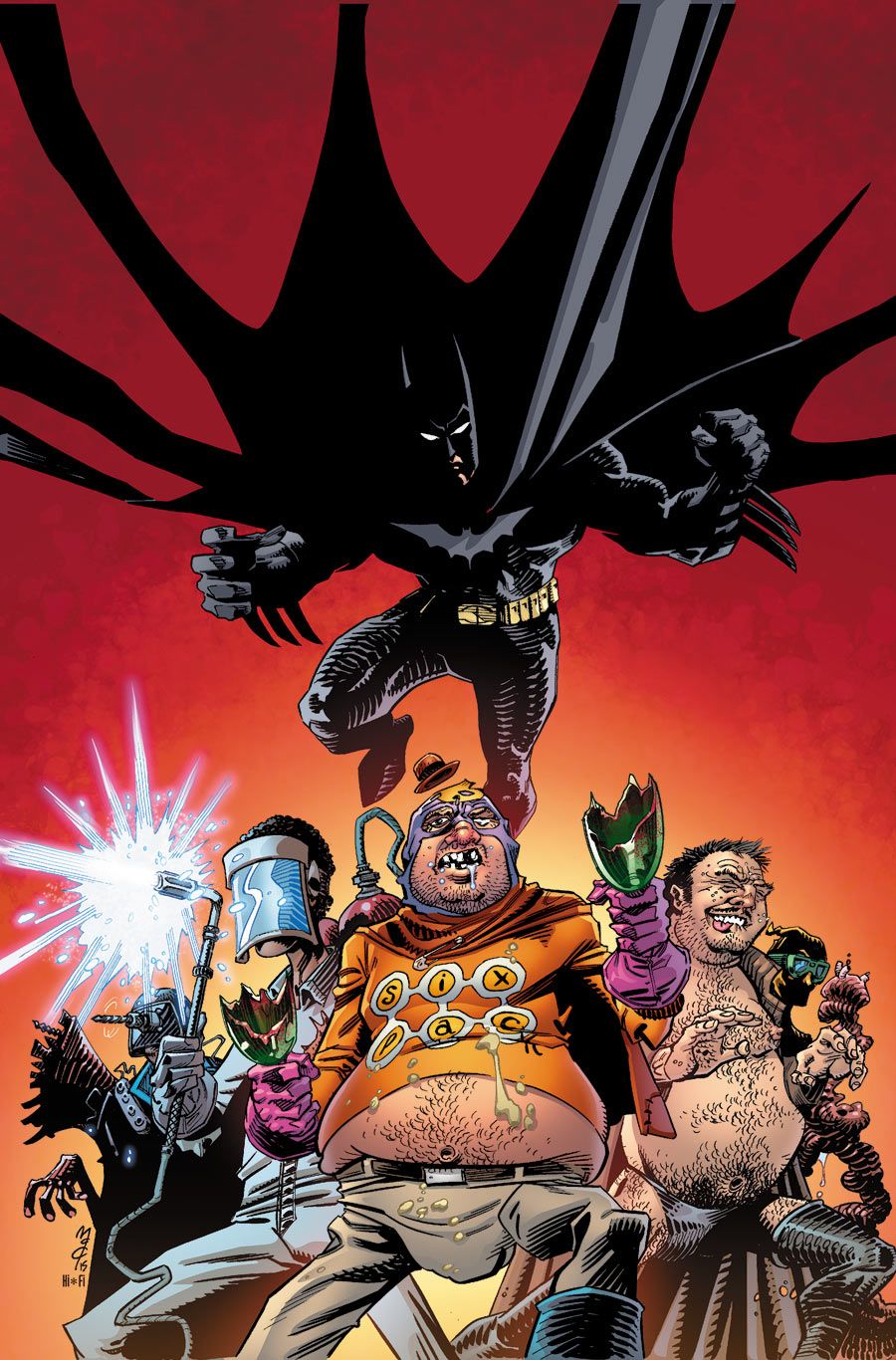Welcome to CBR's third of four CONVERSATIONS OF CONVERGENCE with DC Comics Co-Publisher Dan DiDio.
As comic book readers, retailers, reporters and reviewers converge on DC Comics' event maxi-series, over the next few weeks, DiDio and CBR staff writer Jeffrey Renaud are discussing a specific decade from DC Comics' recent past, searching for answers about what drives an event like "Convergence."
For each conversation, Dan and Jeffrey are also joined by a comic book creator that was integral to the publishers' success during the decade in question.
CONVERSATIONS OF CONVERGENCE: DiDio & Wolfman on "Teen Titans," "Crisis," 1980s DC & More
This week, CONVERSATIONS OF CONVERGENCE looks back at the 1990s, a decade which included the emergence of Vertigo titles like "The Sandman" and "Preacher." Joining DiDio and Jeffrey for this installment is writer/artist Dan Jurgens, who not only created Booster Gold but enjoyed lengthy runs on "The Adventures of Superman" and "Superman," culminating in the best-selling "Death of Superman" storyline. Dan also wrote and illustrated the '90s event series "Zero Hour: Crisis in Time."
Check out the conversation with DiDio and Jurgens via a video below, as well as a full transcript of the conversation.
CBR News: Dan [DiDio], you joined DC Comics in 2002. Arriving at DC Comics, in your new position of leadership, what did you consider, in terms of characters and properties, as the strength or pillars of DC Comics coming out of the 1990s?
Dan DiDio: Coming out of the nineties, naturally I looked at the changes coming out of "Zero Hour." I was reading the books then. I also loved the work that Dan and the team did, under the lead of editor Mike Carlin, on the Superman books. It was just an incredible feat. They were really doing weekly comics before there were weekly comics and I think they did an amazing job with that. I love the sense of story and involvement and the scope of what they did and for me, I'm always looking back at the nineties now to see what ideas were there, what ideas really took hold so that we can find ways to reinvent or reinvigorate [DC Universe] at this time.
Dan [Jurgens], you worked on both "The Death of Superman" and "Zero Hour" in the nineties. You also created Booster Gold in 1986 after building a name for yourself in the 1980s at DC Comics on series like "Sun Devils" with legends Gerry Conway and Roy Thomas, and later "Green Arrow" with Mike Grell, who earlier really helped you break into comics tapping you as an artist on "Warlord" in 1982. Heading into the 1990s, Valiant has launched and Image was founded in 1992. What was the vibe at DC Comics and as a creator, what did you need to do and deliver to set yourself apart from these upstarts?
Dan Jurgens: I think there were a couple of things. Number one, it was always about doing a good story. Even with "The Death of Superman" and everything, it was really galvanized by the idea that we would write about a world without a Superman. And it's really more powerful to talk about someone when they are gone, when they are dead than it is when they're there. There is a message that resonates that way. But the other part of it was, the way that the market worked then, with everything happening, it was be big. It was almost as if the bigger idea that you could possibly dream up and the bigger way that you could possibly think of to present it... that's was what was going to fly. There was just this fun atmosphere in the business at the time that allowed everybody to shoot for the moon.
Dan [DiDio], Dan mentioned this idea of be big. Would you agree? Was that the vibe?
DiDio: I think so. When you look at that period of time right before "Zero Hour" and everything that was going on, you saw changes with the Batman story with the Azrael/Batman story going on, you had "The Death of Superman" going on, then you push forward and you see the Green Lantern story with Parallax, they were really trying to reinvent the wheel and really push the characters forward so there was a lot of stuff that was really giving huge status quo changes to the DC Universe. You could see that one begat the other. And every time one character had a level success with that, it started to bleed to other characters with other stories.
Even when we looked to "Convergence" and building "Convergence," looking to the characters around in the time period around "Zero Hour," we looked at the generational change of characters that was taking place and how characters were transitioning into different interpretations and different sensibilities.
CONVERSATIONS OF CONVERGENCE: DiDio & Wein Talk Jack Kirby at DC, Mega-Events & More
When you are building an event storyline like "The Death of Superman" or "Convergence," obviously the event in and of itself is big, but what does it mean in terms of the rest of line and how it affects all of the other series and creators?
DiDio: You really have to reach out in advance. That's when you are able to really build something out. It's hard to get people to change once they get a story moving and the last thing that you want to do is disrupt stories that are already in place or have some level of momentum taking place within the regular books. What you'd like to do is once you have the idea of what you'd like to build is try to build consensus that the ideas and stories in advance of the story happening and get people on board and see whether or not there are ways to integrate those stories naturally with what they create. Naturally, it has much more of a natural progression and feels more part of the overarching story than to be forced into somebody's story or run. The problem is sometimes, like you see now, you have so many events coming to you back-to-back, you don't have a chance to plan and plot properly in front of these events and therefore everything seems a lot more forced because they're happening one on top of the other. And a lot of the pre-planning phase is lost in that process.
Dan [Jurgens] you've been the one affecting other creators over the years by leading the charge on mega-events like "Zero Hour" and "The Death of Superman." As an event rears its head and you are the one being affected, how do you prepare for such a monster? And is your focus staying true to your own series before you start worrying about what else is going on?
Jurgens: I think more than being true to your story is being true to your character or characters. I think the story can drive potential and I think you find the potential and match it up with the character. And then build from there.
For example, when we did "The Death of Superman," we planned a return of Superman and everything else; we hadn't planned to do this, but we ended up destroying Coast City. Out of that, rippled all of the changes that rippled in Green Lantern's world, we then got Parallax, and everything that led to and became part of "Zero Hour." Through all of that, the idea was to try and be true to character for whatever measures possible and apply it to that and I think that's the key.
Dan [Jurgens], how was the very notion of killing Superman received by editorial? And did you realize how big of a story you were telling at the time?
Jurgens: It goes back to the idea of telling a good story. It was something that we had actually kicked around somewhat jokingly before and then when we really started to talk about it, it isn't just doing a story where Superman might die, it is, "what are you going to do after that?" And when we started talking about "World Without Superman" or the "Funeral for a Friend" storyline, it really became a part of addressing the concept of what Superman means to the world. And at that point, even without having Superman in the books, you are writing about the character. And you're writing about what the character means to every cast member that might go through the book, to the world at large and everything else, which then became, down the road, "The Return of Superman." It's writing about the character and then when you explain it to people, "You know, this is what we thought we might do," and by people, I mean the rest of editorial, it is saying, "but we are going to talk about the character." And that's what drives it.
When crafting these game-changing, line-wide events, honestly, how difficult is it to pull them off? And can you talk about what the situation was like in the 1990s versus what it is like to orchestrate one today with the advent of social media and with media ranging from comic book news sites like Comic Book Resources and Bleeding Cool hunting down spoilers to mainstream outlets like CNN and the Los Angeles Times wanting in on the action?
Jurgens: Certainly the market is different, but at that time we did something of the same thing. The publicity started to flood out of nowhere when the distributor catalogs came out. We had three distributors at that time and they all had their own covers and everything else and they all talked about "The Death of Superman." That's what started to drive some of the publicity so there was that advance notice. What we ultimately did, which was bring back the four Supermen as "The Return of Superman" thing, was kept cloaked in secrecy and that would be almost impossible to do today so both ways have their advantage.
DiDio: Everyone knows that I am one of the worst people to keep a secret when I'm on a panel [Laughs] mainly because I always forget exactly where we are in the publishing schedule. You have to remember, we see things from the initial pitch, we see the outlines, we see the pitch, we see the scripts, we see the art, we the solicitation copy, we see make-ready copies and then we see the actual books and my actual books still come here two to three weeks before they actually get on the shelf so sometimes I get a little confused on the process.
And if it's a story that I really like, I get very excited about it. I can't help it. And I love talking about it and getting people excited about it. And occasionally, things slip through and I like to think that it's for the good of the property, as much as the publicity or other teams might not agree with me as much. [Laughs] I think, quite honestly, that some of this information leaking feeds into the frenzy and gets people excited about it. I know from when I was a fan that I loved getting all of this information and trying to speculate what was going to happen and where the story might go and you can probably tell me the entire story but there is nothing quite like reading it, enjoying it yourself and making your own decisions about what you've seen. The more people talk about it, I could care less because ultimately, the real experience for me is reading the book myself, which is what I enjoy the most.
I live up here in Canada near Stratford and I'll go see Hamlet every summer. I know how it ends. [Laughs] "How do they do it? How do they produce it?" The story is always strong. If you know "The Death of Superman" is coming or whatever, seeing how the writers and artists tell the story, is often just as compelling as knowing the end.
DiDio: And honestly, that forces us to be better in our jobs because the more people have information, the more they have preconceived notions of what their expectations of what the story might be. And how it's going to be told and people work it up into a frenzy about how epic this stuff is so we have to be able to meet those expectations on certain levels.
That's what's fun about "Convergence." What we do is we create a mystery at the beginning. And we do a crazy turn at the center of it that escalates it until the book just shows you all of the worlds and everything collides at the very end. And I'm not giving anything away by saying that so don't point your finger at me. [Laughs] I'm talking about this person in the room with me. I don't want to say anything more. [Laughs] The goal is to really get that sense of the story building and when you reach those crescendos, you've really achieved what everybody hopes the story would be.
WC15: Dan Jurgens Talks "Convergence" Origins, "Death Of Superman's" Impact
Dan [DiDio], you promised that DC Comics was going to over-deliver on "Convergence" and that this storyline is a long-time coming. Can you please shed more light on the origins of "Convergence," what readers can expect in April and May and what the DC Universe will look like in June?
DiDio: It's a great question because there is a lot of speculation about "Convergence." And the idea of the question is whether or not it changes the world at the end of the story? And I'll go the other way. What it does do is it explains the world at the end of the story. What we've done is that we've looked through our history. This isn't just about what we've done since we launched the New 52 going forward. This goes back through the entire history of the DC Universe, looks at a lot of key moments, we're highlighting those stories from "Crisis" and "Zero Hour" and "Flashpoint" and we're bringing them all forward, we're showing the changes and how the characters have changed over the years but we're also -- and I can't say this enough -- focusing on what the Multiverse means to the DCU.
We've brought our attention to the Multiverse. Grant [Morrison] is out there doing "Multiversity," which is this brilliant explanation of the Multiverse. We've got this beautiful Multiverse-themed map. And I can tell you right now that looking at incoming stories, all of the interpretations of the Multiverse through the years, how it's been out there, how it collapsed, how it was reborn and finding new ways to really bring that all together in one story that can really explain the history of DC Comics in a single volume. Other than that, it's a love story. [Laughs]
Jurgens: [Laughs] But you know what, it's a love story to the fans.
In 2011, the launch of the New 52 really changed the landscape of comics. There were 52 new #1s, and you also went same-day digital at that same time. It galvanized the industry and galvanized DC Comics. As we come out of "Convergence," is the New 52 a thing of the past?
DiDio: We're taking the name 'The New 52' off the books. In reality, this is the DC Universe. What we want to do is really explore what the DC Universe is again. Regardless of whether the characters change or stay the same, what we're doing right now is we're looking at the DC Universe as a whole and really pushing that forward with a sense of diversity and a sense of character and story and as far-reaching as possible.
Jurgens & Chang Send "Batman Beyond" into a "Grittier" Version of DC's Future
Dan [Jurgens], post-"Convergence," you're writing "Bat-Mite" and "Batman Beyond" starting in June. They seem like two completely different books other than the word 'Bat' in the title. Can you give us a tease of what's to come and are they connected?
Jurgens: Only, as you said, by the word 'Bat' in the title. [Laughs] What we're going to do in "Batman Beyond" is take some of the different aspects of DC's futures that we've seen and start to weave it into one kind of unified throughline. In other words, the animated universe with "Batman Beyond" was one particular future line and what we saw in some of the [Jack] Kirby stuff was another one, where we had Kamandi and every thing like that. And what we're going to do is take those divergent elements and start to stitch them into one coherent timeline and narrative. And you're going to see a world 35 years from now that has a little bit of all of that to it. It is a world that is more dysfunctional. It is a world that is more apathetic -- where hope is gone. Just like we saw in the "Batman Beyond" animated series yet with some of those classic elements of DC's future timelines that we have seen.
"Bat-Mite," on the other hand, is just off-the-wall crazy. And it is Bat-Mite, here on Earth, to fix broken heroes. And whoever that might be, Bat-Mite thinks he has the goods to make them what people want to see and to function even better, which is quite a misguided goal when you get right down to it.
Finally, Dan [DiDio], Vertigo was breaking critical ground in the 1990s with some timeless classics like "The Sandman" by Neil Gaiman and "Preacher" by Garth Ennis & Steve Dillon. What did that brand of storytelling mean to comics in the 1990s, and then fast forward to 2015 and what can readers expect from a new "Hitman"-related series, "Section 8," written by Ennis and set squarely in the DCU post-"Convergence"?
DiDio: What you were seeing from Garth and other writers in that group were that they were really trying to break the confines of what comic book storytelling was. We have a lot of very traditional, very expected heroes like Superman and Batman and they're supposed to act and behave a certain way and what you saw taking place in the 1990s were the characters really being reimagined and broken and changed to instill a new interpretation for that period time. But also, you saw characters being created at that time that played against the more traditional expectations of a superhero. I think that's one of the things that Garth is extraordinarily strong at. He can look at the core of what the superhero concept is and flip it completely upside down and when you get that, that's when you get series like "Section 8," which are really the deconstruction of the superhero concept more so than building on it.
Stay tuned to CBR News for more installments of CONVERSATIONS OF CONVERGENCE and coverage of DC's "Convergence" event.


